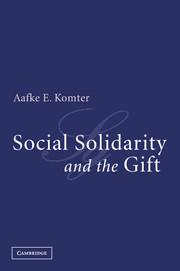3 - The Anatomy of Gratitude
Published online by Cambridge University Press: 24 November 2009
Summary
Gratitude and resentment, therefore, are the sentiments which most immediately and directly prompt to reward and to punish. To us, therefore, he must appear to deserve reward, who appears to be the proper and approved object of gratitude; and he to deserve punishment, who appears to be that of resentment.
(Adam Smith 2002 [1759]: 81)In our commonsense thinking about gratitude, we are inclined to think of it as a warm and nice feeling directed toward someone who has been benevolent to us. The definitions of gratitude given in dictionaries confirm this perspective. Although I think that this view contains an important element of truth, it disregards a more fundamental meaning of gratitude. Beneath these warm feelings resides an imperative force, a force that compels us to return the benefit we have received. Gratitude has a clearly specified action tendency connected to it, as Adam Smith had already noticed and as is also stipulated by contemporary emotion theorists (Lazarus and Lazarus 1994). This duty to return led the social psychologist Barry Schwartz (1967) to speak of the “gratitude imperative.” Why aren't we allowed to look a gift horse in the mouth? Because that would be a sign of ingratitude and of indifference toward the giver, and that is simply disastrous. In Japan the recipient of a gift is not allowed to unwrap it in the presence of the giver.
- Type
- Chapter
- Information
- Social Solidarity and the Gift , pp. 56 - 75Publisher: Cambridge University PressPrint publication year: 2004



